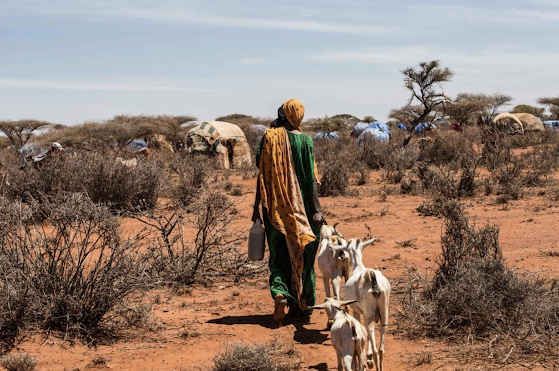Socio-Economic Stressors on Groundwater Supplies
As we saw in our last post, groundwater resources in Africa may be able to sustain flows even during periods of climatic variability. This can be advantageous to rural populations as groundwater is a vital source of their domestic drinking water supply and so may even be dependable into the future in the context of global warming (Figure 1). Groundwater has a lot of potential to sustain people’s health and livelihoods, so it is important to sustainably manage this resource to maintain its benefits (UPGro 2019). Therefore, in this post we are going to look at the socio-economic consequences of climate change in African villages to understand how this could impact groundwater supply and ways we could go about mitigating these challenges.
Figure 1. A borehole in Ethiopia which has been seen as key to improving drought resilience. This is because boreholes have been found to be reliable during climatic changes, provides higher quality water and improves human health compared to unimproved water sources (Water Journalists Africa 2019).
Although groundwater may be recharged under global warming, this may not mean rural populations will have ready access to this resource. If rainfall and surface water in Africa become less reliable under climate change, there may be a greater demand for groundwater as observed during previous droughts (Calow et al. 2010; Calow et al. 2010). These conditions could lead to excessive pumping of boreholes and wells, increasing the risk of mechanical breakdowns or even localised groundwater depletion (MacDonald 2009; Washfunders 2020). Furthermore, as the video below shows, due to poor planning and low funds to maintain groundwater supplies, many boreholes in rural Africa are already unreliable. This could get worse under future water stress, suggesting that the biggest challenge to groundwater supplies under global warming may be related to access.
However, evidence has shown that there may be ways of adapting to this growth in demand in groundwater during climate change. For example, a study by MacDonald et al. (2008) showed that increased demand on a borehole in a poor aquifer (i.e. low transmissivity) can lead to far greater drawdowns and higher risk of source failure than similar demands placed on more permeable (‘moderate’) aquifers during a dry season (Figure 2). It suggests that by ensuring boreholes are situated in the most productive hydrogeological locations and creating emergency boreholes outside villages that can be used if local sources dry up, groundwater reliability could be maintained during periods of prolonged drought (Calow et al. 2010).
Figure 2. Differences in the maximum daily drawndown of a borehole located in a poor and moderate aquifer as the dry season progresses. Poor and moderate aquifers have a transmissivity of 1 m2/d and 10m2/d respectively. Two scenarios have been modelled: yield is at 0.1L/s for 12 hours a day, and yield is doubled to 0.2 L/s for 12 hours a day 90 days into the dry season (MacDonald et al. 2008).
However, with the African population expected to grow rapidly over the first half of this century, it remains uncertain whether these adaptions will be enough to meet the rise in demand that could be expected (The Economist 2020). Therefore, if groundwater is to continue to be a reliable source of water despite environmental challenges, we need to develop a sounder groundwater management plan that is sustainable in the rural context. This means having a better understanding of the future relationship between local hydrology and groundwater demand under the financial constraints of African villages.




Comments
Post a Comment